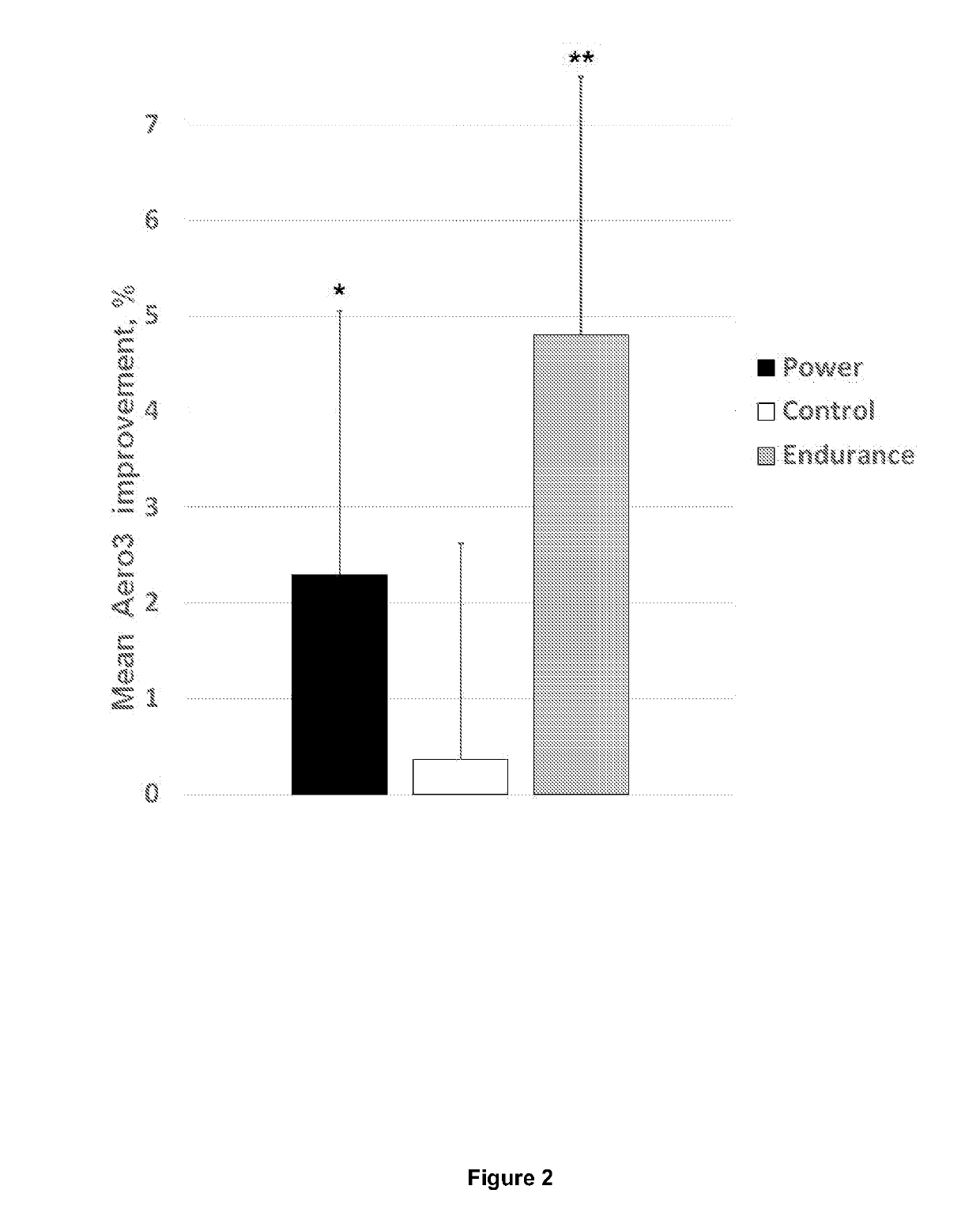Genes and personalised training
- Summary
- Abstract
- Description
- Claims
- Application Information
AI Technical Summary
Benefits of technology
Problems solved by technology
Method used
Image
Examples
example 1
[0028]The inventors have identified 15 polymorphisms located within the genes primarily involved in the regulation of muscle fibre type composition and muscle size, cytoskeletal function, muscle damage protection, metabolism, circulatory homeostasis, mitochondrial biogenesis, thermogenesis and angiogenesis as being particularly useful in predicting an athlete's response to training. The inventors tested, in two independent studies, the hypothesis that genetically matched athletes (i.e. high-intensity trained with power genotype or low-intensity trained with endurance genotype) show greater improvements in explosive power (countermovement jump) and aerobic fitness (aerobic 3-min cycle test) in response to high- or low-intensity resistance training compared to mismatched athletes (i.e. high-intensity trained with endurance genotype or low-intensity trained with power genotype).
[0029]The inventors performed two studies in independent cohorts of male athletes (study 1: athletes from dif...
example 2
[0049]A study was conducted alongside Portsmouth College where genotype matching was used to monitor response to training in a group of collegiate soccer players. The players underwent three discrete training blocks:[0050]1. Aerobic training,[0051]2. Speed endurance training,[0052]3. Sprint training.
[0053]No modifications of training interventions were made; instead the training response was monitored to see if the genotype groups saw different training adaptations. For the purpose of analysis, the athletes were split into “power” athletes (>50% power score) and “endurance” athletes (<50% power score). There were no athletes with a 50-50 split.
[0054]It was found that during the aerobic training block, endurance players saw greatest improvements in the Counter-Movement Jump (CMJ) test, improving by an average of just under 6%. In this same block, power players saw a decrement in CMJ performance. Aerobic training would be classed as “endurance-based” training; as such, genotype-matche...
example 3
[0057]Forty youth soccer players undertook eight weeks of sport-specific aerobic training in the form of small sided games. Training was matched to the individual genotype of the players as follows:[0058]A. Endurance players: training on larger pitches, requiring longer duration running activities with a greater aerobic component.[0059]B. Power players: training on smaller pitches, requiring a high number of short sprints with multiple accelerations representative of typical power-based training.
[0060]The players underwent pre- and post-training tests of power (CMJ and 10 m sprint) and endurance (maximum 3-minute cycle).
[0061]The results for the power tests are given in FIG. 1 showing that players who trained on smaller pitches (power players doing power training) saw significantly greater improvements than players who had trained on larger pitches (endurance players doing endurance training).
[0062]The results for the endurance tests are given in FIG. 2 showing that players who trai...
PUM
| Property | Measurement | Unit |
|---|---|---|
| Fraction | aaaaa | aaaaa |
| Fraction | aaaaa | aaaaa |
| Fraction | aaaaa | aaaaa |
Abstract
Description
Claims
Application Information
 Login to view more
Login to view more - R&D Engineer
- R&D Manager
- IP Professional
- Industry Leading Data Capabilities
- Powerful AI technology
- Patent DNA Extraction
Browse by: Latest US Patents, China's latest patents, Technical Efficacy Thesaurus, Application Domain, Technology Topic.
© 2024 PatSnap. All rights reserved.Legal|Privacy policy|Modern Slavery Act Transparency Statement|Sitemap


